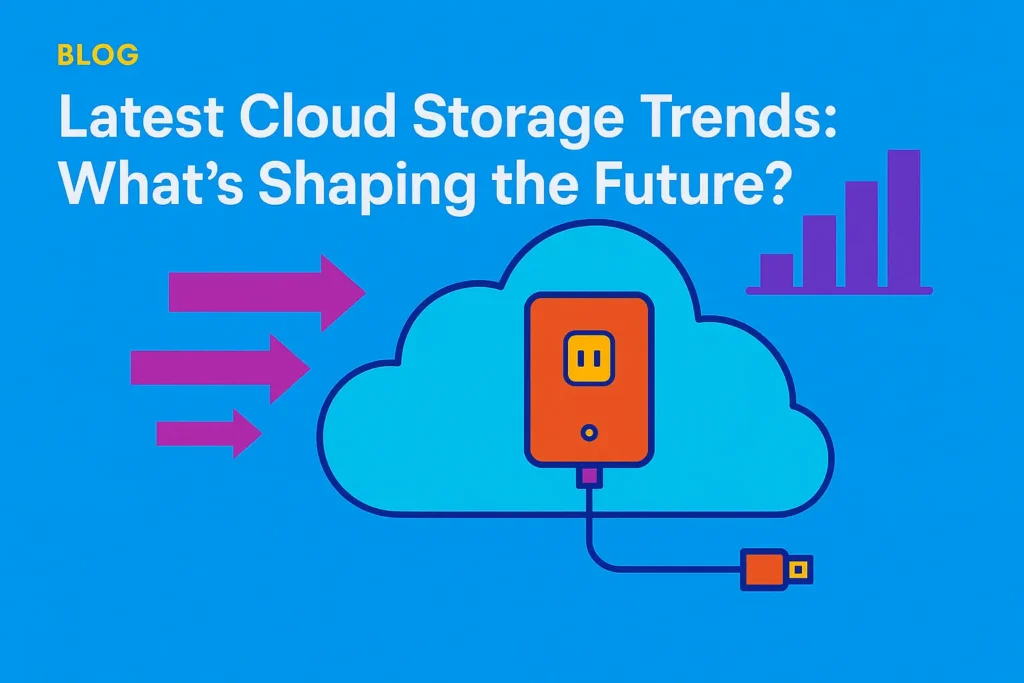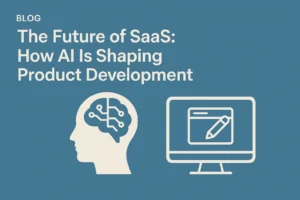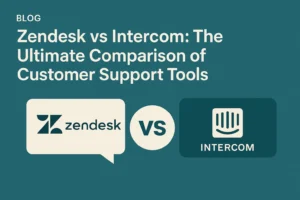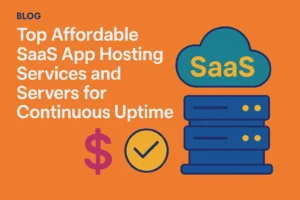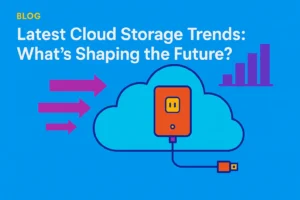Latest Cloud Storage Trends: What’s Shaping the Future?
Cloud storage has evolved significantly over the past decade, shifting from traditional on-premises solutions to scalable, on-demand services provided by major cloud vendors. This transformation has been driven by the increasing need for data accessibility, cost efficiency, and robust security.
Staying updated on the latest cloud storage trends is crucial, as businesses and individuals rely on these technologies for seamless collaboration, disaster recovery, and scalable infrastructure. With global data creation expected to reach 181 zettabytes by 2025, the demand for advanced cloud storage solutions continues to rise, shaping the future of digital storage and data management. Let’s explore tops trends in Cloud Storage.
-
Growth of Multi-Cloud and Hybrid Cloud Storage
As businesses seek greater flexibility and resilience in their IT infrastructure, multi-cloud and hybrid cloud strategies have gained significant traction. Organizations are no longer relying on a single cloud provider but instead leveraging multiple cloud services to optimize performance, reduce costs, and mitigate risks.
| Feature | Multi-Cloud Storage | Hybrid Cloud Storage |
| Definition | Uses multiple public cloud providers from different vendors | Integrates private (on-premises) and public cloud services |
| Purpose | Avoid vendor lock-in, optimize costs, and improve redundancy | Maintain control over sensitive data while leveraging public cloud scalability |
| Use Cases | Disaster recovery, workload distribution, compliance requirements | Secure data storage, application hosting, flexible computing power |
| Scalability | High, but depends on integration between providers | Flexible, with seamless scaling between private and public clouds |
Hybrid cloud solutions, which combine private and public cloud environments, offer enhanced scalability, improved security, and cost-effective data management. This approach enables businesses to keep sensitive workloads on-premises while utilizing the public cloud for scalable computing needs.
The increasing adoption of multi-cloud strategies reflects a shift toward more dynamic and adaptable IT environments. Companies are prioritizing vendor diversification, disaster recovery preparedness, and regulatory compliance by distributing workloads across multiple cloud platforms. As cloud technology advances, multi-cloud and hybrid solutions will continue to play a pivotal role in shaping the future of data storage.
1. Edge Computing and Decentralized Storage
Edge computing is transforming how data is processed and stored by bringing computation closer to the source of data generation. Instead of relying solely on centralized cloud storage, edge computing reduces latency, enhances real-time processing, and improves bandwidth efficiency. This is particularly beneficial for applications requiring low-latency responses, such as IoT devices, autonomous vehicles, and industrial automation.
The rise of edge computing is reshaping cloud storage architecture. Rather than storing all data in a centralized cloud, businesses are adopting hybrid models where frequently accessed data is processed at the edge, while long-term storage remains in the cloud. This reduces data transfer costs and alleviates network congestion, ensuring faster and more efficient operations. Cloud providers are increasingly integrating edge computing solutions to support distributed storage and processing needs.
Decentralized storage is emerging as an alternative to traditional cloud storage, leveraging blockchain and peer-to-peer (P2P) networks to store and distribute data securely. Unlike centralized storage, where data is kept in data centers owned by cloud providers, decentralized storage solutions distribute data across multiple nodes, reducing risks of data loss, censorship, and single points of failure.
Some notable decentralized storage technologies include:
- InterPlanetary File System (IPFS): A distributed protocol that enables content-addressed storage, making data retrieval faster and more efficient.
- Filecoin: A blockchain-based decentralized storage marketplace that incentivizes users to share storage space.
- Storj & Sia: Platforms that utilize blockchain to offer encrypted, distributed cloud storage solutions.
2. AI and Machine Learning in Cloud Storage
Artificial Intelligence (AI) and Machine Learning (ML) are revolutionizing cloud storage by enhancing data management and optimization. AI-driven storage solutions can analyze vast amounts of data in real-time, automate organization, and optimize storage allocation based on usage patterns. This helps businesses reduce costs, improve efficiency, and ensure seamless scalability.
Predictive Analytics for Storage Efficiency
AI-powered predictive analytics enables cloud storage providers to anticipate storage demands and optimize resource allocation proactively. By analyzing historical data usage trends, AI can:
- Forecast storage capacity requirements, preventing over- or under-provisioning.
- Identify redundant or infrequently accessed files, recommending tiered storage solutions.
- Enhance data retrieval speeds by preloading frequently accessed data closer to users.
This predictive capability improves performance and reduces operational costs for businesses relying on cloud storage.
Automation of Backup, Recovery, and Security
AI and ML are enhancing cloud storage security and reliability through automation. Key applications include:
- Automated Backup & Recovery: AI ensures critical data is backed up regularly, detects anomalies in backup processes, and streamlines disaster recovery operations.
- Intelligent Threat Detection: AI-driven security systems can monitor and detect potential cyber threats, including ransomware and unauthorized access, minimizing data breaches.
- Self-Healing Storage Systems: Some AI-enhanced storage solutions can automatically detect and fix storage errors, reducing downtime and improving system reliability.
3. Enhanced Security and Compliance Trends
As cloud storage adoption grows, security and regulatory compliance remain top priorities for businesses and individuals. With rising cyber threats and stricter data protection laws, organizations are focusing on advanced security models and compliance strategies to safeguard sensitive data.
Zero Trust Security Models in Cloud Storage
The Zero Trust model is becoming a standard approach for cloud storage security. Unlike traditional perimeter-based security, Zero Trust operates on the principle of “never trust, always verify.” Key elements include:
- Identity & Access Management (IAM): Strict authentication measures like multi-factor authentication (MFA) and role-based access control (RBAC).
- Continuous Monitoring: AI-driven security analytics to detect and prevent unauthorized access in real time.
- Micro-Segmentation: Restricting access to data based on user roles and device trust levels to minimize breach risks.
By implementing Zero Trust, organizations can significantly reduce the risk of data breaches and unauthorized access in cloud storage environments.
Regulatory Compliance Challenges and Solutions
With global regulations like GDPR (General Data Protection Regulation), CCPA (California Consumer Privacy Act), and HIPAA (Health Insurance Portability and Accountability Act) enforcing strict data protection guidelines, businesses face complex compliance challenges. Non-compliance can result in hefty fines and reputational damage.
To address these challenges, organizations are adopting:
- Data Localization & Residency: Storing data within specific geographic regions to comply with local regulations.
- Automated Compliance Tools: AI-powered solutions that monitor and enforce regulatory requirements in real time.
- Privacy by Design: Integrating compliance measures into storage infrastructure from the outset, ensuring secure data handling.
Encryption and Privacy-Enhancing Technologies
To protect data from unauthorized access and cyber threats, cloud storage providers are investing in advanced encryption and privacy-enhancing technologies, including:
- End-to-End Encryption (E2EE): Encrypting data before it leaves a user’s device and keeping it encrypted until retrieved by an authorized recipient.
- Homomorphic Encryption: Allowing computations on encrypted data without decrypting it, ensuring privacy during processing.
- Confidential Computing: Using secure enclaves in cloud environments to process sensitive data without exposing it to cloud providers.
4. Sustainability and Green Cloud Storage
As global data storage needs increase, so does the environmental impact of cloud infrastructure. Data centers consume vast amounts of electricity and contribute to carbon emissions, making sustainability a critical focus for cloud storage providers. Green cloud storage initiatives are aimed at reducing energy consumption, optimizing storage efficiency, and minimizing the carbon footprint of data storage operations.
Eco-Friendly Data Centers and Energy-Efficient Storage Solutions
Modern data centers are transitioning toward more sustainable operations by:
- Utilizing Renewable Energy: Many cloud providers power their data centers with solar, wind, and hydroelectric energy to reduce reliance on fossil fuels.
- Liquid Cooling Systems: Advanced cooling techniques, such as immersion cooling, help lower power consumption compared to traditional air cooling methods.
- Energy-Efficient Storage Technologies: Innovations like SSD-based storage, AI-driven energy optimization, and deduplication techniques reduce power usage and improve efficiency.
Cloud Providers’ Sustainability Commitments
Leading cloud service providers have set ambitious sustainability goals to make cloud storage greener:
- Amazon Web Services (AWS): Aims to be water-positive by 2030 and reach net-zero carbon emissions by 2040, with 100% renewable energy powering operations.
- Google Cloud: Already carbon-neutral and working towards operating entirely on carbon-free energy 24/7 by 2030.
- Microsoft Azure: Targets 100% renewable energy usage by 2025 and aims to be carbon-negative by 2030.
These commitments push the cloud industry toward more responsible energy usage and sustainability-driven innovations.
The Role of Carbon Footprint Reduction in Cloud Storage Strategies
Organizations are increasingly factoring sustainability into their cloud storage decisions. Strategies to lower carbon footprints include:
- Data Lifecycle Management: Automatically moving infrequently accessed data to lower-energy archival storage tiers.
- Carbon-Aware Workloads: Running cloud storage and computing tasks during periods of higher renewable energy availability.
- Sustainable Procurement Policies: Choosing cloud providers and storage solutions based on their environmental impact.
As sustainability becomes a priority, businesses adopting green cloud storage strategies will not only reduce their environmental impact but also benefit from cost savings and compliance with evolving environmental regulations.
5. The Rise of Storage-as-a-Service (STaaS)
Storage-as-a-Service (STaaS) is revolutionizing how businesses manage and scale their data storage needs. By offering cloud-based, subscription-driven storage solutions, STaaS enables organizations to access flexible, on-demand storage without the need for expensive on-premises infrastructure.
Growth of Subscription-Based Storage Models
Traditional storage models require significant capital investment in hardware, maintenance, and upgrades. In contrast, STaaS operates on a pay-as-you-go or subscription basis, allowing businesses to scale storage up or down based on their needs. This model is particularly beneficial for startups, enterprises with fluctuating storage demands, and industries managing large-scale data processing.
Advantages of STaaS for Businesses
- Scalability: Businesses can instantly expand or reduce storage capacity without investing in physical infrastructure.
- Cost Savings: Eliminates upfront hardware costs, reducing capital expenditure while shifting to an operational expense model.
- Automation & Management: AI-driven STaaS solutions handle data tiering, archiving, and security without manual intervention.
- Disaster Recovery & Backup: Built-in redundancy and recovery options enhance business continuity and data protection.
Key Players and Market Trends
The STaaS market is expanding rapidly, with major cloud providers and emerging startups offering innovative solutions. Key players include:
- Amazon Web Services (AWS) S3 & Glacier: Offers scalable object storage with multiple pricing tiers.
- Microsoft Azure Blob Storage: Provides flexible storage options with seamless cloud integration.
- Google Cloud Storage: Features high-performance, cost-optimized storage with AI-powered insights.
- IBM Cloud Object Storage: Focuses on hybrid cloud deployments and AI-driven storage optimization.
Market Trends:
- AI-Powered Storage Management: Automating storage allocation, optimization, and security.
- Hybrid STaaS Models: Combining on-premises and cloud storage for greater flexibility.
- Sustainability-Driven Storage: Energy-efficient and carbon-conscious storage solutions gaining traction.
Conclusion:
The cloud storage landscape is rapidly evolving, with key trends such as multi-cloud and hybrid cloud adoption, edge computing, decentralized storage, AI-driven automation, enhanced security measures, and sustainable storage solutions shaping the future. As data continues to grow at an unprecedented rate, businesses must stay ahead by embracing scalable, secure, and cost-efficient cloud storage strategies.
To prepare for the future, organizations should:
- Adopt a multi-cloud or hybrid approach for greater flexibility and risk mitigation.
- Leverage AI and automation to optimize storage efficiency and enhance security.
- Ensure compliance with data regulations to avoid legal risks and strengthen customer trust.
- Explore green cloud storage solutions to align with sustainability goals.
- Consider STaaS (Storage-as-a-Service) for a scalable, subscription-based storage model.
At My SaaS Journey, we help SaaS businesses navigate the complexities of cloud storage, ensuring they adopt the right solutions to stay competitive. Whether you’re looking to optimize your cloud infrastructure, enhance security, or reduce costs, our expert insights can guide you toward a future-proof storage strategy.
Get in touch with us today to future-proof your cloud storage strategy and stay ahead in the evolving SaaS landscape! 🚀

